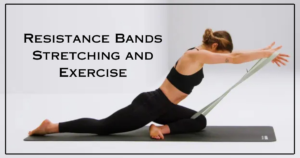Exercises for wrist strengthening exercises increase wrist muscle strength as well as the tendons’ and wrist joints’ range of motion and flexibility. Athletes like boxers, gymnasts, and tennis players may find that wrist strengthening exercises workouts help them. Exercise may also help workers who are susceptible to carpal tunnel syndrome avoid being hurt.
Some exercises can be performed at home using a weighted object, like a soup can, water bottle, or a light dumbbell. You can learn the correct way to execute wrist exercises from a physical therapist. Please consult your healthcare professional before beginning any fitness program to ensure that it is safe for you, given your diagnosis and medical history.
Wrist strengthening exercises and fingers can be accomplished with simple movements. This exercise may be a good warm-up before more difficult ones. Sit comfortably with your elbow bent and your arm at a right angle. Make a fist. Slowly open your hand, spreading and stretching your fingers. Repeat several times. Repeat with the other hand. You can also use this stretch occasionally when performing repetitive tasks, like typing.
You will need a table or desk, a chair, and a dumbbell for the wrist extension.3.
Your forearm should rest on a table as you sit on the chair. With your hand and wrist hanging over the edge of the table, hold a 2- or 3-pound dumbbell.
Lift your hand slowly such that the back of it slides toward the ceiling while keeping your palm facing down. Keep your forearm resting on the table.
Hold the position for a few seconds once your wrist is fully extended, and then slowly bring your hand down. Ten to fifteen times, repeat this motion. Do two or three sets.
Wrist-strengthening exercises are not necessary for this alternative exercise.
Keep one hand bent at the elbow at chest level.
Flexion of the Dumbbell Wrist
Keep your forearm lying on the table while you continue to hold the weight.
Flip your hand so that the palm is up against the ceiling.
Maintain your arm’s back against the table. After that, raise your wrist so that your palm faces the ceiling.
Hold your wrist in this posture for two to three seconds once it is fully flexed. After that, slowly return your hand to its initial position.
For two or three sets of ten to fifteen repetitions, repeat the wrist flexion exercise.
Without the use of weights, these flexion exercises can also be performed as follows: 4. Hold a hand at chest level with the elbow bent, then gently draw the hand back with the fingers of the other hand. Repeat the wrist strengthening exercises with the arm straight this time, then switch hands and perform the activity for the other hand.
Stretch for Prayer
As though in prayer, stand with your elbows bent and place your palms together, fingertips up, slightly below your chin.7.
Lower your fingers while keeping them together until the insides of your arms start to stretch. Keep your fingers together, but let your palms apart.
For 15 to 30 seconds, hold.
Perform two to four reps.
The Steeple Stretch
Begin in the “praying” stance from above for this stretch.
Spread your thumbs and fingers as widely as is comfortable.
Pull your hands apart and then back together while keeping your fingers together.
Perform a few repetitions each day.
6 Dumbbell Supination at the Wrist
Place your wrist and hand over the edge of a chair while the side of your forearm rests on the table. Make sure your thumb is pointing at the ceiling.
Like you would with a hammer, hold the end of a tiny dumbbell that weighs between one and three pounds in your hand.
Allow your wrist and hand to turn such that your palm is toward the ceiling slowly.
After a few seconds of holding the end position, carefully twist your hand back up until the dumbbell is straight up again.
By switching up how you rotate your wrist, you can alternate between the supination and pronation exercises described in the following step.
Sit in a chair with your wrist strengthening exercises and hand over the edge and your forearm resting on a table to improve your wrist pronators.
With the weight pointing upward toward the ceiling, grasp one end of a dumbbell.
Rotate your hand slowly until your palm and wrist are pointing downward toward the ground. After a few seconds of holding this posture, carefully rotate your hand back to the beginning position, this time with the weight pointed upward toward the ceiling.
Do ten to fifteen repetitions in two or three sets.
Turn your palm up and down alternately if you are doing this exercise in conjunction with wrist supination (in the step before).
In summary, physical therapy can help you increase the strength, flexibility, and range of motion of your arm following surgery or an accident to your wrist, hand, elbow, or shoulder. That physical treatment regimen may include wrist-strengthening exercises.
Wrist-strengthening exercises may also be beneficial for athletes who depend significantly on hand strength and flexibility, such as boxers, gymnasts, and tennis players.
You can learn how to do these easy exercises correctly with the assistance of a physical therapist. Before starting an exercise program, make sure to consult your healthcare physician.
You can prevent stress injuries and repetitive motion injuries by strengthening and stretching the muscles surrounding your wrists.
These stretches and exercises help you regain your wrist range of motion if you have had an injury.
How to proceed?
Your wrist bones join your hand and forearm. The forearm muscles are responsible for controlling wrist movements. 18 forearm muscles, each with a distinct function, will be worked to wrist strengthening exercises
We will begin by doing some easy stretches that do not require any special equipment and can be performed anywhere. After that, we will go over a few fundamental exercises that vary in difficulty.
Stretching out
Before you start exercising, perform this easy stretch to relax your hands and fingers. If you are performing repetitive hand motions, it is also a good idea to take a moment to rest your hands and wrists.
Bend your arm at the elbow at a right angle while sitting comfortably.
Make a fist, then slowly spread and stretch your fingers apart to open it.
Do this several times.
With your other hand, repeat.
Stretching for prayer
Place your palms together, elbows bent, and your fingertips pointing up slightly below your chin.
Keeping your hands tight to your stomach and clasped together, lower them toward your waist.
Hold the stance for 30 seconds or until the underside of your forearms feels moderately stretched.
Do this two or four times.
If you can hold your fingers together, you will feel this stretch more. As you lower your hands, you will probably notice that your fingers start to flex.
Using a steeple for a prayer stretch
Maintain the same hands-together stance as stretch No. 3 while standing with your elbows bent and palms together.
As widely apart as you can, spread your thumbs and fingers. Then, while keeping your fingers and thumbs in contact, move your hands together and apart once more. Do this several times during the day.
You can find more stretches and variations on this one here.
Strengthener for ball squeeze
Any ball that is around the size of a tennis ball can be used for this workout. Exercise putty, which is available in gentle, medium, and firm strengths, is an alternative.
Purchase workout putty on the internet.
Squeezing can also be done with a pool noodle or a rolled-up towel.
Take a comfortable seat and wrap your thumb and fingers around the ball or putty in your hand.
Apply as much pressure as you can.
For three to five seconds, hold the squeeze.
Slowly loosen your hold.
Five to ten times, repeat.
Curls on the wrists
You can use 1- to 5-pound weights or a clenched fist for this strengthening exercise. You can perform one arm at a time or both arms simultaneously. Your level of physical strength will determine this. A tiny food container or water bottle can also be used as a weight.
Place your arm over your legs and sit comfortably. With your wrist strengthening exercises dangling over your knee and your palms facing down, hold a weight.
In a long, deliberate motion, please raise your hand as high as you can and then lower it as far as you can.
Repeat after completing a set of ten.
Do the exercise again, this time with your hands up.
Exercise 1 uses a resistance band
Exercise aids that are easy to use and adaptable are resistance bands. Their strengths vary. A light resistance band is a good place to start if you are healing from an injury. But pick a thicker band if you are practicing for a sport.
Your wrist flexors and extensors are worked by this
Place your arm on a table with your palm facing down and your hand dangling over the side while you sit comfortably. Hold the other end of the resistance band in your palm while placing the other end beneath your foot to keep it in place. To generate some tension, you should wrap it around your hand. Extend your wrist as far as you can while pulling up against the resistance. Maintain a calm and fluid motion.






